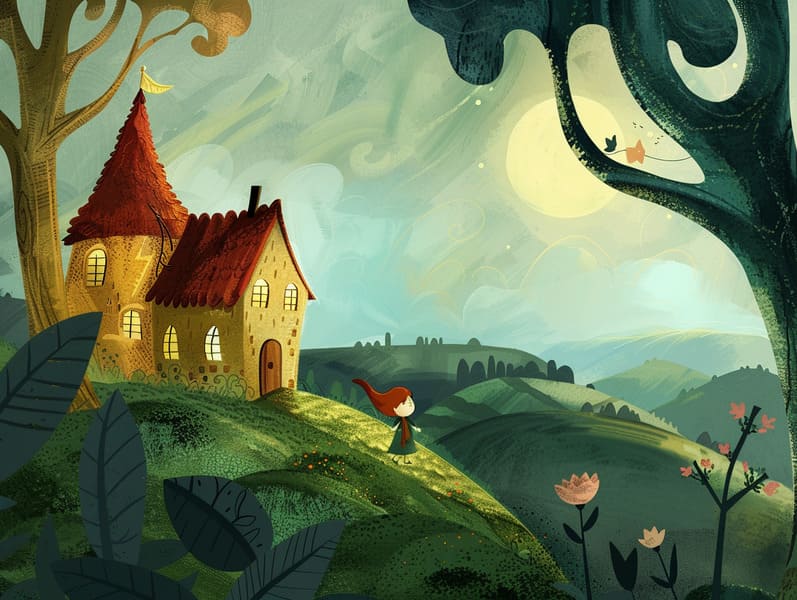The Inception of Grimm's Fairy Tales with Its Unwavering Grandeur.
The Inception of Grimm's Fairy Tales with Its Unwavering Grandeur.
Blog Article

Children's fairy tales have long histories. These tales have been recounted from one generation to the next well before they were ever inscribed. They came from a variety of cultures, including European traditions. They were initially narrated among older generations, often carrying themes and messages pertaining to the societal norms and beliefs of the time.
The famous Grimm duo, the two Grimm brothers, were among the first to compile and release many of these beloved fairy tales. Their collection, "Grimm's Fairy Stories," included stories like "The True Bride," "Little Brother and Little Sister," and "The True Story of Snow White," which have since become staples in the world of iconic fairy tales. Similarly, Hans Christian Andersen's charming stories, such as "The Little Mermaid," and "The Ugly Duckling," have won hearts worldwide, ensuring their place in the pantheon of beloved fairy tales.
Despite their age, fairy tales remain as meaningful as ever, especially as bedtime stories for kids. These charming stories are now available in numerous formats, including beautifully illustrated books, enchanting animations, and online storybooks.
Their continued relevance can be ascribed to several fascinating points:
Significant Morals: Old fairy tales often present important moral lessons. Fairy tales like "The Boy Who Cried Wolf" teach the virtue of truthfulness, while "The Story of the Tortoise and the Hare" stress the traits of steadfastness and humility. These narratives offer kids clear distinctions between correct and incorrect, forming their moral compass in a subtle yet impactful way.
Compassion and Insight: Classic fairy tales frequently present personalities facing challenges and struggles, stimulating young readers to relate with their struggles and rally behind their triumphs. For instance, "The Tale of Beauty and the Beast" highlights the importance of valuing inner qualities to acknowledge the inner core of a being, developing understanding and recognition.
Cultural Perception: Many fairy tales are interwoven with the cultural contexts from which they originated. Discovering these narratives can provide fascinating glimpses into different backgrounds, encouraging a sense of international awareness and recognition.
Imagination and Creativity: The enchanted elements in old fairy tales—enchanted lands—trigger children’s dreams. These tales transport readers to enchanted realms, kindling fantasy-filled thoughts and a sense of amazement that continues a lifetime.
Traditional fairy tales are not only mesmerizing but also pedagogical. They serve as entrancing tools in developing various mental and emotional abilities in the young. When old fairy tales are told out loud, they promote verbal skills by presenting new terms and complex sentence structures. This practice also enhances auditory perception and concentration, as the young stay focused, expectant to see what happens next.
Furthermore, reflecting on the themes and characters of fairy tales can advance cognitive skills and analytical skills. Children are educated to identify patterns, expect results, and get cause and effect. These debates also promote young ones voice their check here thoughts and feelings, advancing their emotional intelligence.
In today’s electronic age, the existence of web-based fairy tales has made these narratives more accessible than ever. Online platforms and programs provide extensive collections of Grimm's fairy tales that can be perused or played anytime, anywhere. Fairy tales narrated are particularly well-received, supplying an engaging way for young readers to delight in these captivating stories. Read-aloud stories and read-to-me stories bring characters and settings to life, often supported by whimsical sound effects and tunes that heighten the tale-telling adventure.
The lasting appeal of ancient fairy tales lies in their ability to modify to changing times while maintaining their core values. Contemporary modernizations of these narratives often introduce more inclusive characters and modern settings, making them accessible to today’s audience. However, the underlying themes of gallantry, charity, and integrity remain unchanged, continuing to strike a chord with young listeners of all ages.
Timeless fairy tales also offer a sense of reassurance and recognition. They yield a tidy narrative with a apparent beginning, middle, and end, often winding up with the solving of conflicts and the triumph of morality over wickedness. This dependability can be encouraging for children, making known a sense of solidity in an inconstant world.
Classic fairy tales continue to bewitch and guide new generations, maintaining their radiance and relevance in modern society. As bedtime stories for kids, they impart a perfect blend of captivation and insight, fostering moral values, empathy, and creativity. The presence of digital storybooks and the in demand status of fairy tales read out loud secure that these traditional tales remain accessible to new generations.
By retaining and sharing these fairy tales, we continue to glorify the rich tapestry of cultural legacy and cultural heritage. Whether you are exploring a colorful picture book, perusing a online collection, or hearing an audiobook, the captivation of ancient fairy tales is always within reach. These narratives teach us of the undying ability of storytelling and its ability to link us across time and space.
No matter if you are perusing a colorful picture book, perusing a cyber library, or listening to an read-aloud book, the charm of Grimm's fairy tales is always within reach.
These tales remind us of the continued nature of tales and its ability to bring us together across generations and cultures, forging a link that charms and informs alike.